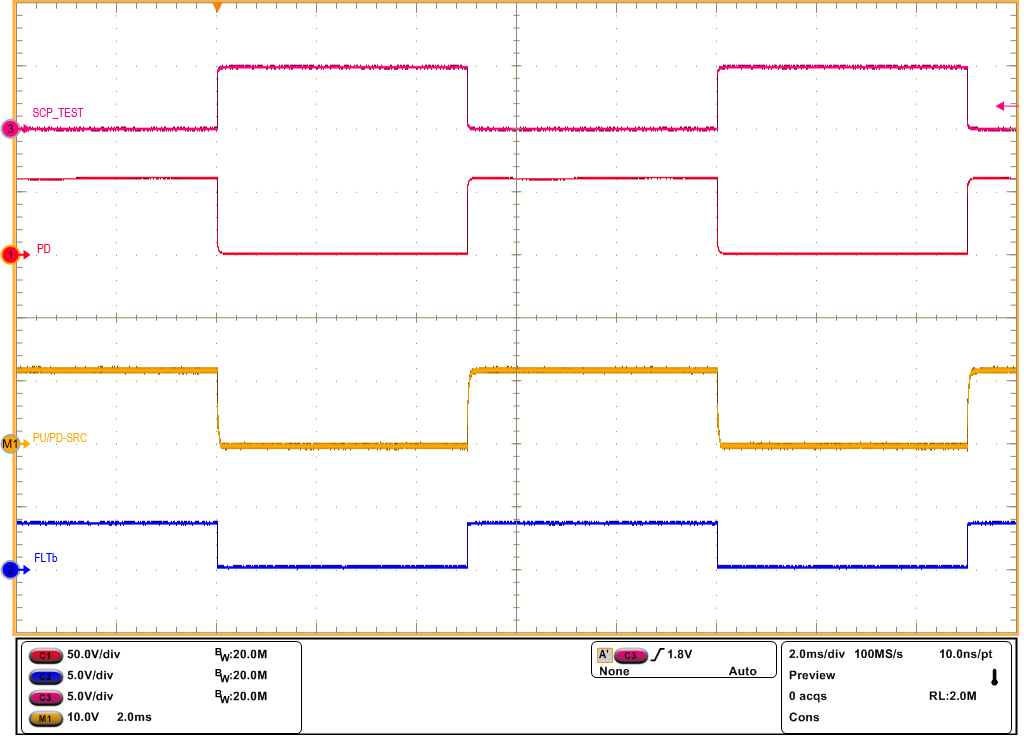SLUUCV8 October 2023 TPS4810-Q1
3.1.3 Short-Circuit Protection Diagnosis Test
Use the following instructions to perform the short circuit protection diagnosis test
- Set the input supply voltage VIN to 48 V and current limit of 10 A.
- Enable the power supply.
- Now, toggle the SCP_TEST (TP9) and observe the response of G1PU/PD and FLTb pins during short circuit comparator (SCP) diagnosis.
Figure 4-8 shows the SCP_TEST response of TPS48100-Q1 device.
 Figure 3-8 SCP_TEST Response of TPS48100-Q1
Figure 3-8 SCP_TEST Response of TPS48100-Q1